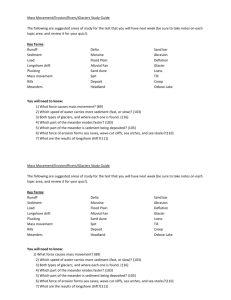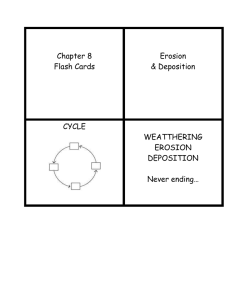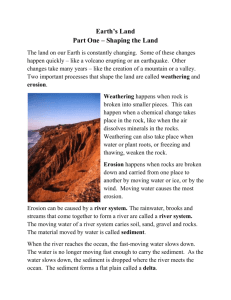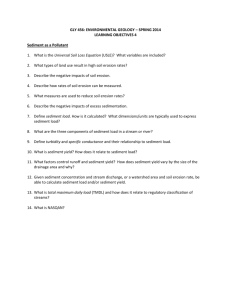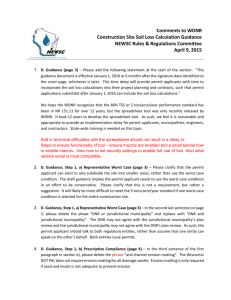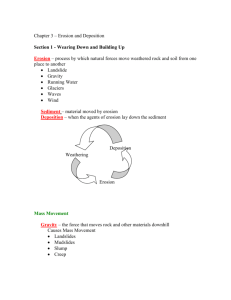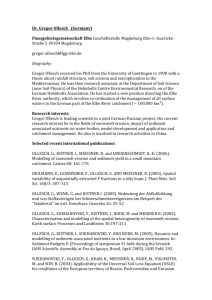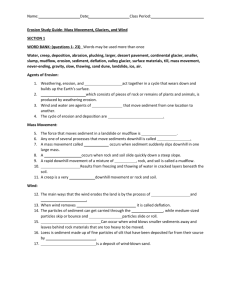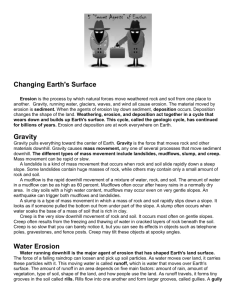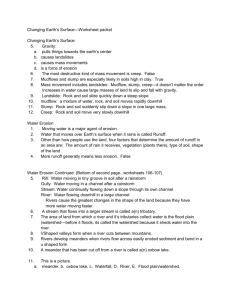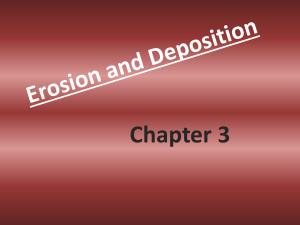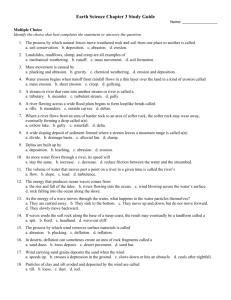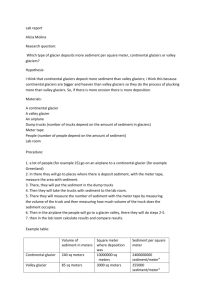Section 1 Earth`s Changing Surface Weathering
advertisement
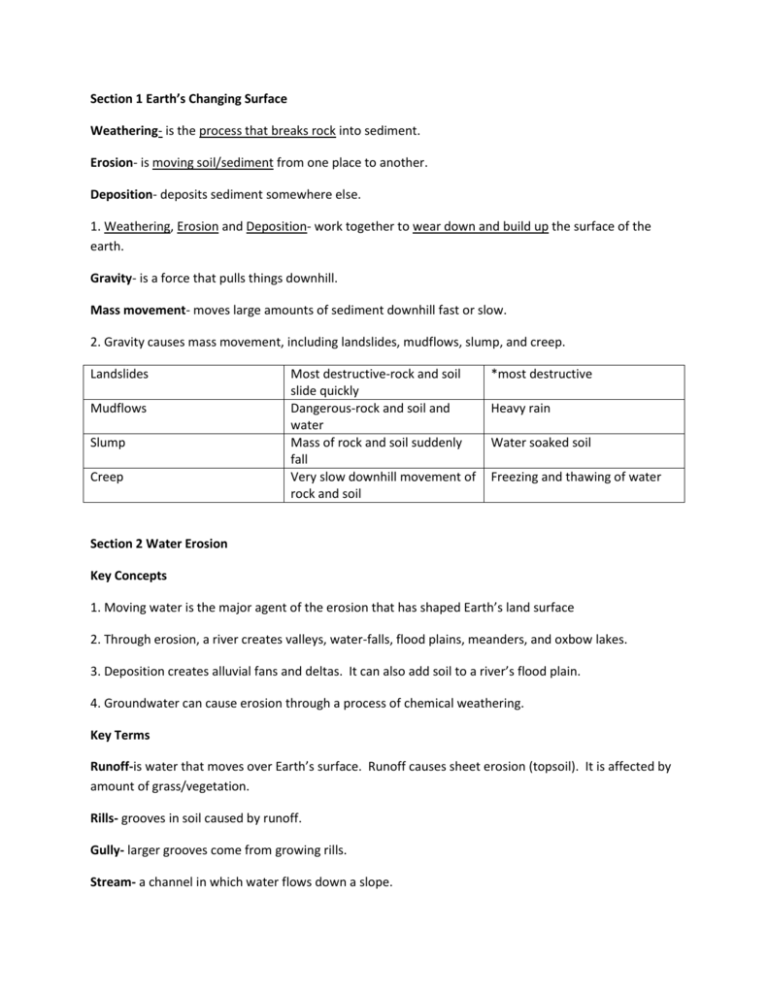
Section 1 Earth’s Changing Surface Weathering- is the process that breaks rock into sediment. Erosion- is moving soil/sediment from one place to another. Deposition- deposits sediment somewhere else. 1. Weathering, Erosion and Deposition- work together to wear down and build up the surface of the earth. Gravity- is a force that pulls things downhill. Mass movement- moves large amounts of sediment downhill fast or slow. 2. Gravity causes mass movement, including landslides, mudflows, slump, and creep. Landslides Mudflows Slump Creep Most destructive-rock and soil slide quickly Dangerous-rock and soil and water Mass of rock and soil suddenly fall Very slow downhill movement of rock and soil *most destructive Heavy rain Water soaked soil Freezing and thawing of water Section 2 Water Erosion Key Concepts 1. Moving water is the major agent of the erosion that has shaped Earth’s land surface 2. Through erosion, a river creates valleys, water-falls, flood plains, meanders, and oxbow lakes. 3. Deposition creates alluvial fans and deltas. It can also add soil to a river’s flood plain. 4. Groundwater can cause erosion through a process of chemical weathering. Key Terms Runoff-is water that moves over Earth’s surface. Runoff causes sheet erosion (topsoil). It is affected by amount of grass/vegetation. Rills- grooves in soil caused by runoff. Gully- larger grooves come from growing rills. Stream- a channel in which water flows down a slope. Tributary- a stream or river that flows into a larger river. Flood plain- flat, wide area of land along a river (banks) Meander- loop like bend in the course of a river. Alluvial fan- deposits dropped in a fan shaped at bottom of a mountain. Delta- sediment deposited where a river flows into an ocean or lake. Stalactite- a deposit that hangs like an icicle from the roof of a cave Stalagmite-deposit on the floor Section 3 Glaciers Key Concepts 1. There are two kinds of glaciers-continental glaciers and valley glaciers. 2. The two processes by which glaciers erode the land are plucking and abrasion. 3. When a glacier melts, it deposits the sediment it eroded from the land, creating various landforms. Key Terms Glacier- a large mass of moving ice Continental glacier- covers much of a continent, or island. Antarctica Valley glacier- a long, narrow glacier that forms when snow and ice build up high in a mountain valley. Plucking- glacier picks up rock as they move across land. Till- sediment that is deposited by a glacier. Section 4 Waves Key Concepts 1. The energy in waves comes from wind that blows across the water’s surface. 2. Waves shape the coast through erosion by breaking down rock and transporting sand and other sediment. 3. Waves shape a coast when they deposit sediment, forming coastal features such as beaches, spits, and barrier beaches. Key Terms Beach- area of wave- washed sediment (usually sand) along a coast. Longshore drift- sediment moves down the beach with the current. Spit- forms from a longshore drifts deposition. Section 5 Wind Key Concepts 1. Wind causes erosion by deflation and abrasion. 2. Wind erosion and deposition may form sand dunes and loess deposits. Key Terms Sand dune- A deposit of windblown sand. Deflation- wind removes surface material Loess- sediment that is finer than sand. (Clay) Glacial deposition has literally carved out landscape regions around the world and in New York State. As glaciers move over the land they act as a "bulldozer" changing the view of the landscape. As glaciers pass over the land they leave distinct features that are very common to New York State. New York State was once covered by ice, miles thick.



